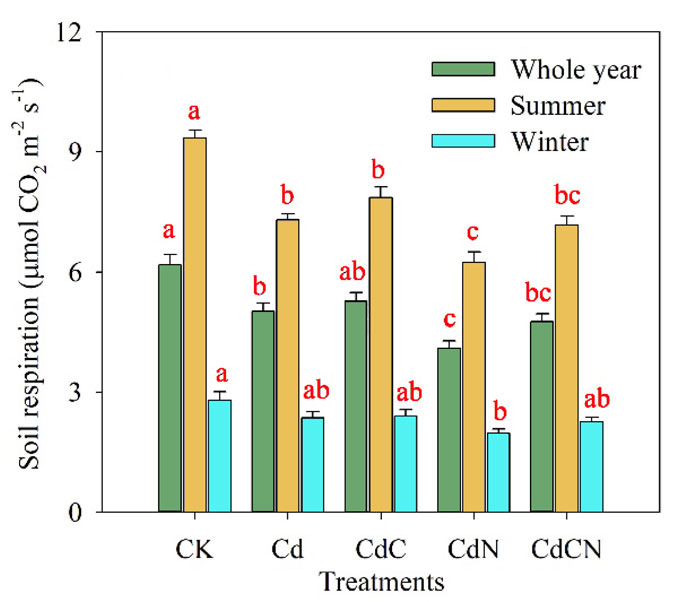| Tweet | Follow @co2science |
Paper Reviewed
Yao, B., Hu, Q., Zhang, G., Yi, Y., Xiao, M. and Wen, D. 2020. Effects of elevated CO2 concentration and nitrogen addition on soil respiration in a Cd-contaminated experimental forest microcosm. Forests 11: 260, doi:10.3390/f11030260.
The potential for climate change to alter soil respiration in the future is a concern of climate alarmists who predict CO2-induced global warming will increase the flux of CO2 from soils back into the atmosphere and thereby result in a positive feedback loop of higher atmospheric CO2 concentrations, higher temperatures and increased soil respiration of CO2 back into the atmosphere. Studies that have investigated this concern, however, are relatively few in number and have presented different findings that range from an increase, decrease or no change in soil respiration as atmospheric CO2 and temperatures rise.
One of the more recent papers to address this topic is that of Yao et al. (2020). As their research contribution, the team of six scientists studied the soil respiration response of five tree species grown in open-top chambers under different treatment combinations of CO2, nitrogen (N) and cadmium (Cd) exposure. The work was conducted at the South China Botanical Garden of the Chinese Academy of Science, Guangzhou, China over a period of approximately one year. The five treatments included in the study were (1) CK (the control; with ambient Cd, ambient CO2, and ambient N deposition), (2) Cd (with Cd addition, ambient CO2, and ambient N deposition), (3) CdC (with Cd addition, elevated CO2, and ambient N deposition), (4) CdN (with Cd addition, N addition, and ambient CO2) and (5) CdCN (with Cd addition, elevated CO2, and N addition). Ambient CO2 was set at approximately 400 ppm and elevated CO2 at 700 ppm, with enrichment occurring between 0800 and 1700 hours each day (except on rainy days). N addition was set at 100 kg N ha-1 yr-1, which represents twice the current deposition rates of the area. Lastly, Cd addition was applied at a rate of 10 kg Cd ha-1 yr-1, which represented conditions of heavy Cd toxicity in the soil.
So, what was the impact of these various treatment conditions on soil CO2 respiration?
As shown in the figure below, annual mean soil respiration rates amounted to 6.17, 5.01, 5.26, 4.10 and 4.76 µmol CO2 m-2 s-1 in the CK, Cd, CdC, CdN and CdCN treatments respectively, which represented overall soil respiration decreases of 19%, 15%, 34% and 23%, again respectively. Similar declines were observed in soil respiration on a seasonal basis (winter and summer) as also shown in the accompanying figure.
The remarkable decline of soil respiration observed under all treatment conditions, which is perhaps better described as a remarkable increase in soil carbon sequestration, puts a damper on the hypothesized positive soil-atmosphere CO2 feedback loop mentioned at the beginning of this review. If anything, the data from this study suggest it is more likely that feedback loop is negative, especially in light of the authors' comment that "we failed to find a strong positive effect of elevated CO2 on soil respiration in Cd-contaminated soil."

Figure 1. Mean soil respiration rate (annual, summer and winter) as impacted by five open-top chamber treatments: CK (the control; with ambient Cd, ambient CO2, and ambient N deposition); Cd (with Cd addition, ambient CO2, and ambient N deposition); CdC (with Cd addition, elevated CO2, and ambient N deposition); CdN (with Cd addition, N addition, and ambient CO2); and CdCN (with Cd addition, elevated CO2, and N addition). Vertical lines represent the standard error of the mean (n = 3). Within the same period, means with different letters are significantly different (p < 0.05) based on repeated measures ANOVA. Adapted from Yao et al. (2020).




